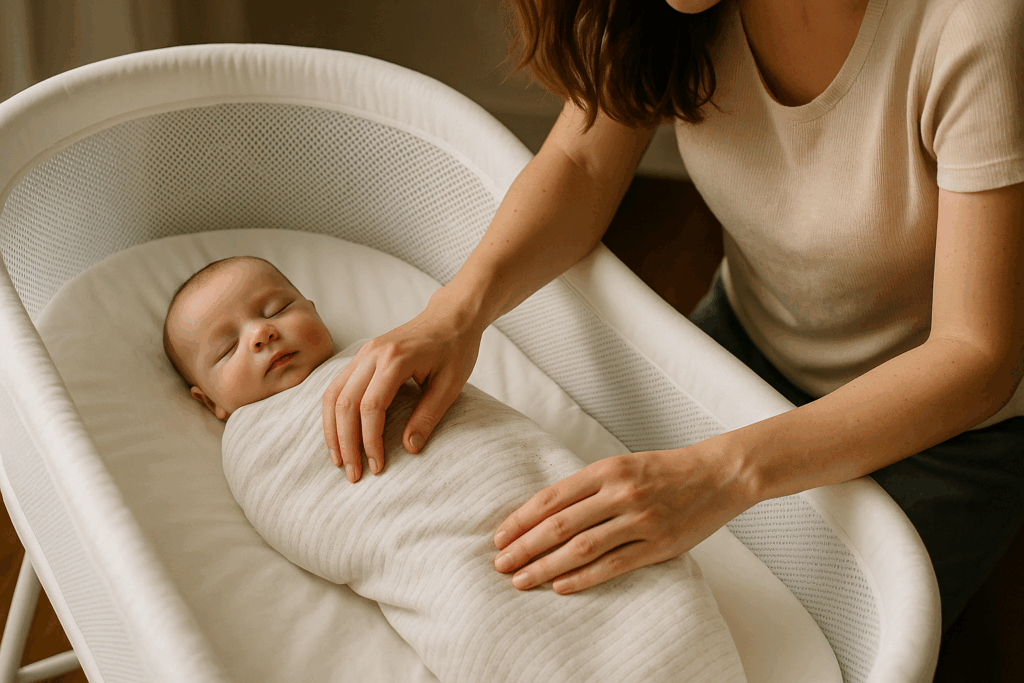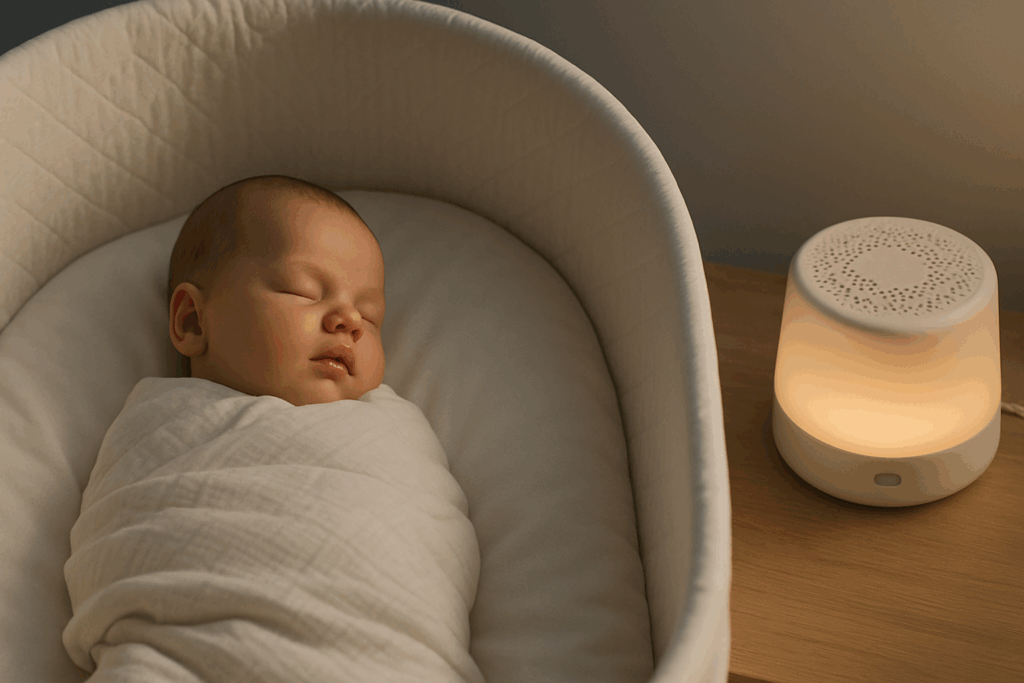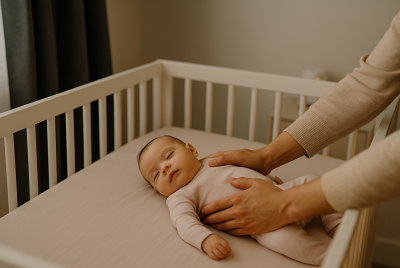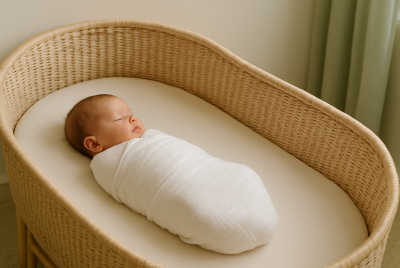Baby Won’t Sleep in Bassinet? Try These Gentle Fixes
We may earn a commission for purchases made using our links. Please see our disclosure to learn more.
If your baby won’t sleep in the bassinet, you’re not alone—and you’re definitely not doing anything wrong. Many new parents face this frustrating challenge. The good news? There are simple, comforting strategies that can help ease your baby into sleeping peacefully in their own space.
Let’s explore why bassinet battles happen and how you can lovingly guide your baby to better rest—without tears, guilt, or guesswork.
Why Your Baby Might Be Fighting the Bassinet
It’s Not the Womb Anymore
Your baby just spent months in a warm, cozy, constantly moving environment. So when they’re placed in a still, flat bassinet, it can feel strange—maybe even scary. The sudden shift from womb to bassinet can cause resistance, especially in the first few weeks.
Bassinet Comfort and Setup Matters
Is the mattress too firm? Is the room too cold? Does your baby startle at every tiny sound? Sometimes it’s not the bassinet itself but the environment around it that’s disrupting your baby’s sleep. Minor adjustments—like white noise or a soft, breathable swaddle—can make a world of difference.
Common Mistakes That Make Sleep Harder
Moving Baby Too Soon
If your baby falls asleep in your arms and you move them too quickly to the bassinet, that shift can trigger their startle reflex. Waiting until they’re in a deep sleep stage (about 15–20 minutes) before moving them can help prevent wake-ups.
Inconsistent Sleep Routines
Babies thrive on patterns. Without a consistent bedtime or routine (like bath, book, feed, sleep), your little one might feel unsettled or unsure. Even a short, calming ritual can help signal it’s time for rest.

How to Help Your Baby Adjust to the Bassinet
Start with Naps During the Day
Before diving into nighttime sleep, try daytime naps in the bassinet. Let your baby get familiar with it during low-stress times. Even if they only stay in for 10–15 minutes at first, it’s still progress.
Use a Swaddle or Sleep Sack
Swaddling can mimic the secure feeling of the womb, helping your baby feel calm and contained. If your baby has outgrown swaddling, try a snug-fitting sleep sack that allows movement but still offers comfort.
Make the Bassinet Feel Cozy (but Safe)
Resist the urge to add pillows or blankets (they’re not safe for infants). Instead, ensure the room is the right temperature (between 68–72°F) and consider using a baby-safe portable heater or fan for comfort. Some bassinets also allow slight incline adjustments—just make sure it’s approved for safe sleep.
Baby Sleep Products That Can Help
Here are some parent-favorite products that support better bassinet sleep:
1. Hatch Rest Baby Sound Machine
🎵 Plays white noise, lullabies, and even mimics a heartbeat.
🛒 View on Amazon
2. SwaddleMe Original Swaddle Wraps
🤱 Soft, adjustable swaddle helps reduce startles.
🛒 View on Amazon
3. VTech DM221 Audio Baby Monitor
🔊 Crisp audio and a soft-glow nightlight help parents stay connected while giving baby a calm sleep space.
4. OCCObaby Universal Bassinet Wedge
🛏 Slight incline helps with reflux or congestion.
🛒 View on Amazon
If you’re not sure which soothing tool is best, this guide on noise machines for babies can help you understand the different features and benefits. A consistent white noise sound can help drown out household disruptions and improve your baby’s ability to stay asleep longer.
These tools aren’t magic, but they can support your baby’s transition—especially when combined with patience and consistency.
Research-Backed Insights: Why Bassinet Sleep Matters
Modern parenting isn’t just instinct—it’s informed by science. If you’re wondering whether it’s worth the effort to help your baby sleep in a bassinet, research says yes.
Study 1: Safer Sleep in the First Two Months
A published analysis in The Journal of Pediatrics reviewed bassinet use trends between 1992 and 2006. It revealed a growing shift toward bassinets during the newborn stage—especially in the first two months of life. This shift correlates with heightened awareness around sleep safety and the need for firm, dedicated sleep surfaces. Researchers emphasized that using a properly set up bassinet can significantly reduce risks associated with unsafe sleeping environments.
🔗 Read the full study on bassinet safety and infant sleep trends
Study 2: Swaddling and Smart Sleep Tech Reduce Crying
Another review in Frontiers in Pediatrics explored how the “five S’s” method—swaddle, side/stomach position (for calming only, not sleep), shush, swing, and suck—paired with smart sleep technology like the SNOO bassinet dramatically improves newborn sleep. The study noted that infants using these soothing strategies cried less, slept longer, and helped mothers experience more restful nights, too.
🔗 See the review on soothing methods and SNOO bassinet results
Together, these studies reinforce what many parents already feel: the bassinet isn’t just tradition—it’s a safe, supported way to start your baby’s sleep journey.

When to Ask for Help
If your baby still won’t sleep in the bassinet despite trying multiple strategies, it’s okay to reach out to your pediatrician. They can rule out medical concerns like reflux, gas, or colic. Sleep consultants can also offer personalized guidance that aligns with your parenting style.
You’re not failing—some babies just need more support to settle.
Final Thoughts: Progress Over Perfection
Every baby is different. Some take to the bassinet right away. Others need time—and that’s okay. The key is consistency, comfort, and calm. Celebrate the small wins, like one extra minute in the bassinet, or one less night of bouncing. With gentle encouragement, your baby will get there.
Frequently Asked Questions
What age should a baby sleep in a bassinet?
Most newborns can sleep in a bassinet from birth to about 4–6 months, or until they show signs of rolling over or outgrowing the space.
How long does it take for a baby to get used to a bassinet?
It depends on the baby, but most adjust within a few weeks with consistent effort. Gradual exposure and comforting routines speed up the process.
Can I sleep train my baby in a bassinet?
Yes, gentle sleep training methods can be used in a bassinet. Make sure your baby is developmentally ready (around 4 months) and consult your pediatrician before starting.
Should I let my baby cry in the bassinet?
It’s okay for a baby to fuss a little as they settle, but prolonged crying isn’t recommended for newborns. Responding with comfort builds trust and security.
What if nothing seems to work?
Don’t hesitate to reach out for support—from your pediatrician, sleep coach, or fellow parents. You’re not alone, and there’s no shame in needing help.




